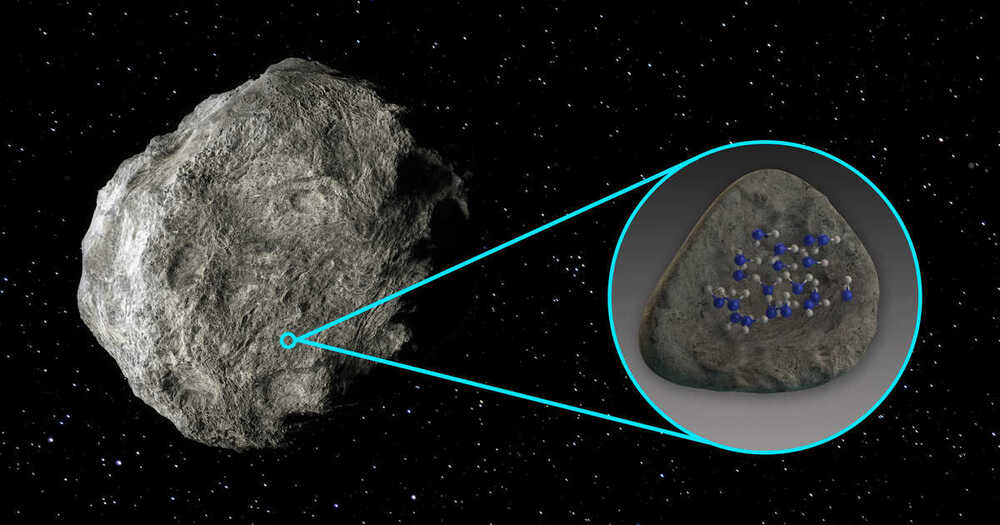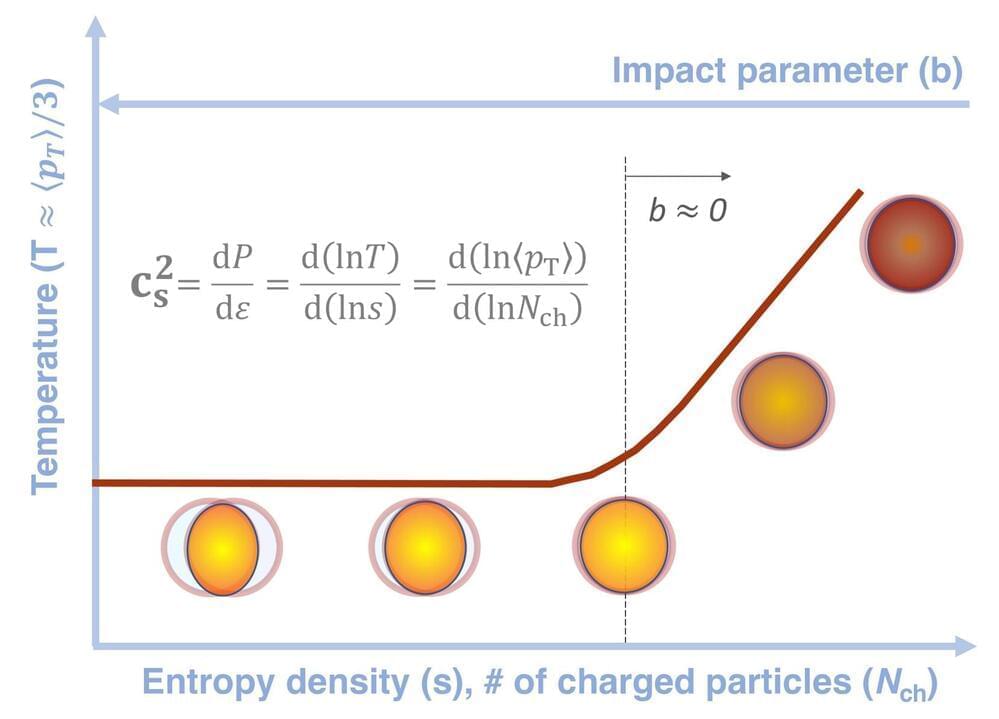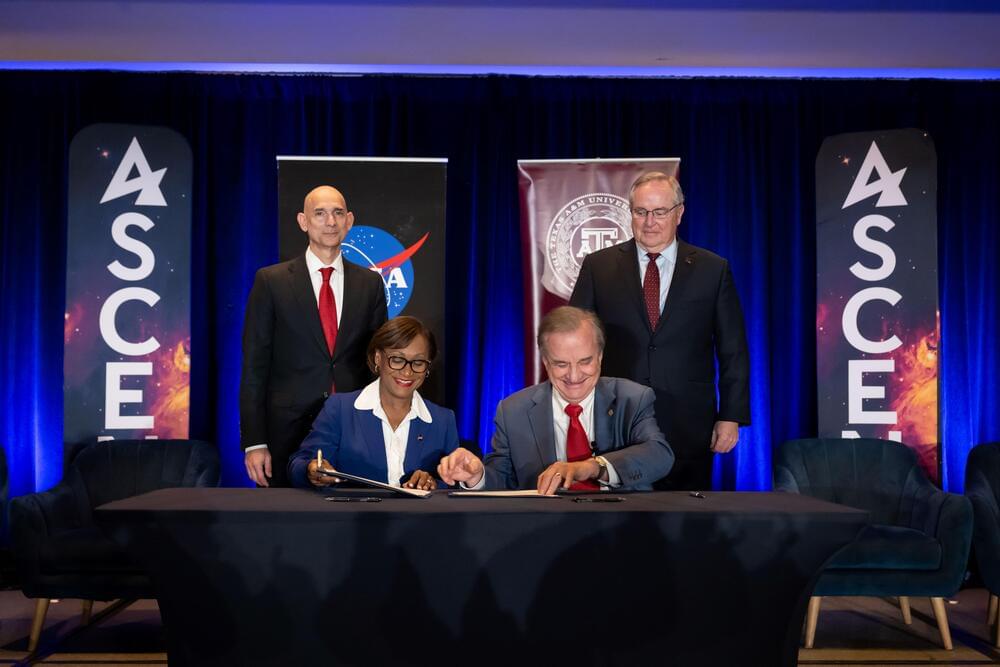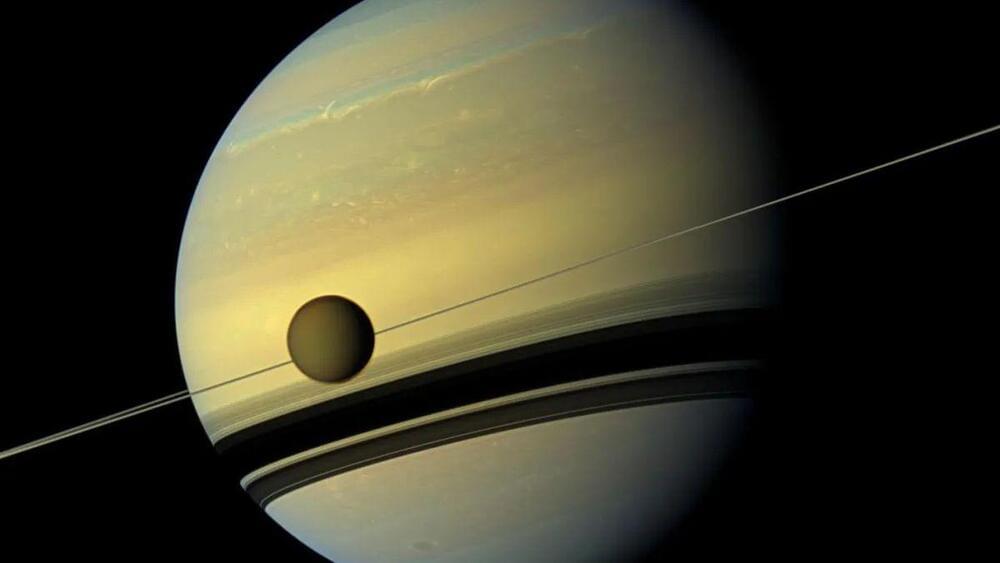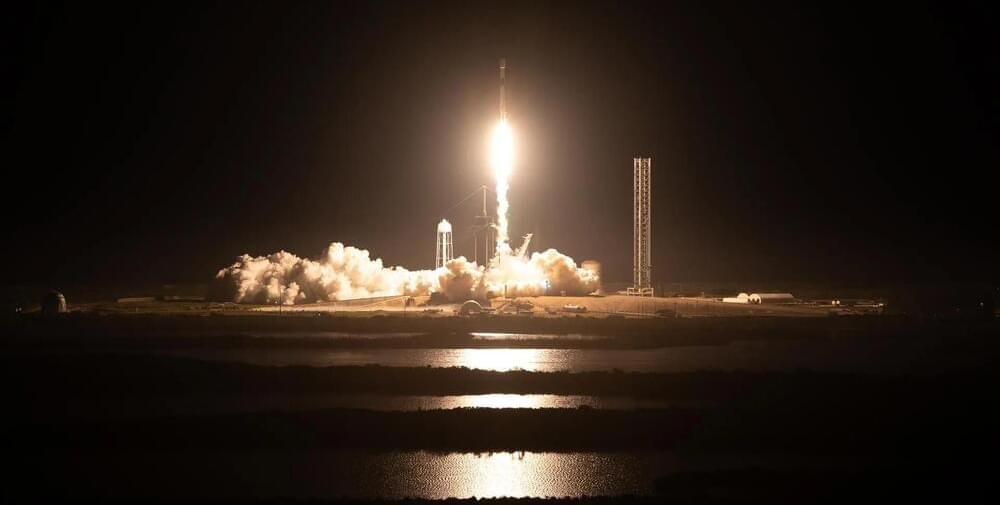Archive for the ‘space’ category: Page 125
Feb 17, 2024
NASA Telescopes Are Unlocking the Secrets Behind Mysterious Deep Space Signals
Posted by Saúl Morales Rodriguéz in categories: energy, space
Using two of the agency’s X-ray telescopes, researchers were able to zoom in on a dead star’s erratic behavior as it released a bright, brief burst of radio waves.
What’s causing mysterious bursts of radio waves from deep space? Astronomers may be a step closer to providing one answer to that question. Two NASA X-ray telescopes recently observed one such event – known as a fast radio burst – mere minutes before and after it occurred. This unprecedented view sets scientists on a path to better understand these extreme radio events.
While they only last for a fraction of a second, fast radio bursts can release about as much energy as the Sun does in a year. Their light also forms a laser-like beam, setting them apart from more chaotic cosmic explosions.
Feb 17, 2024
15 Weapons Of The Future Will Blow Your Mind
Posted by Dan Breeden in categories: chemistry, military, nuclear weapons, quantum physics, robotics/AI, space
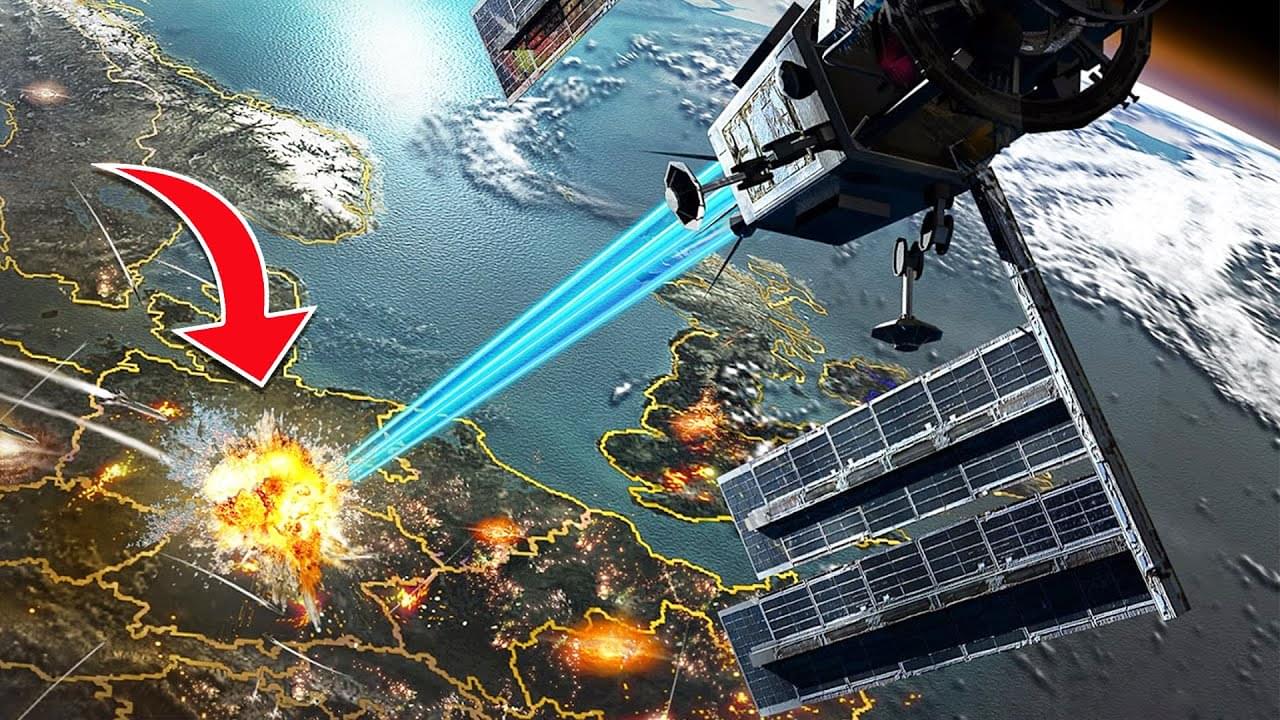
Ultimate fact presents top 15 Weapons Of The Future Will Blow Your Mind. We’ve come a long way since sticks and stones, and it’s almost inconceivable that only a few hundred years ago, Man was still waging war with bows, arrows, cannons, and muskets. Modern militaries are constantly in the process of developing new weapons, some of which will definitely make some mouths drop. We thought it would be fun to take a closer look at the most amazing offensive and defensive weapons currently in the works.
Autonomous weapons.
These are robotic vehicles, under development, that search and destroy enemy troops and equipment on the ground or in the air, without risk to friendly troops – theoretically.
Onboard computers interpret sensor data to identify and target hostile forces with built-in weapons. Robots may query human controllers at remote sites for the go-ahead to fire, and friendly forces may carry transponders that identify them as “friends”
High-energy lasers.
These are powerful energy beams that travel through air or space in straight lines. They travel at the speed of light and can strike over distances of thousands of kilometres. Large mirrors focus powerful laser beams onto a small spot on the target.
Space-based weapons.
Space is the ultimate high ground, so weapons in orbit would have the ability to see and zap anything on the ground, in the air, or nearby in space. The main mission of space-based weapons would be to defend against ballistic missiles fired at targets on Earth.
Hypersonic aircraft.
Launched from a standard runway, a hypersonic aircraft could fly faster than Mach 5 to strike anywhere in the world within two hours. It would also have enough thrust to deliver a satellite to low-Earth orbit. To get off the ground from a runway, a hypersonic plane would either hitch a ride on a conventional plane, or have its own conventional jet engine.
Active Denial System.
Millimetre-wave or microwave beams supposedly make people flee without injuring them. They might typically be powered by a generator fitted to a Humvee, in crowd control situations.
A 2-metre antenna and mobile generator produce and aim a beam of 95-gigahertz (3-millimetre) radiation.
Nuclear missiles.
Nuclear missiles are able to deliver unmatched destructive power anywhere in the world, making them the ultimate level of military power. One or more nuclear warheads are mounted on a ballistic missile, and launched vertically.
Stun guns (Tasers)
Tasers disable people with bursts of high-voltage electricity, allowing police to subdue them without lasting injury. A special gun fires darts on wires. These deliver a pulse of electricity that temporarily disrupts control of voluntary muscles.
E-bombs.
A rapid increase in electromagnetic field strength during a pulse, induces surges of electric current in conductors. This burns out electrical equipment – semiconductor chips are particularly vulnerable.
Layered missile defence.
Layered missile defence offers the best chance to shoot down attacking ballistic missiles.
Multiple anti-missile systems are deployed to target ballistic missiles during different stages of the attacking missile’s flight: Each phase, or layer, of defence increases the chance of successful destruction of the missile.
Information warfare.
This technique interferes with the flow of information vital to enemy operations, while defending friendly channels of communication. Information warfare specifically targets communication networks and computers.
‘Hyper Stealth’ or ‘Quantum Stealth’
Using naturally occurring metamaterials, scientists have been designing lightwave-bending materials that can greatly reduce the thermal and visible signatures of a target.
Electromagnetic Rail Guns.
EM rail gun launchers use a magnetic field rather than chemical propellants (e.g., gunpowder or fuel) to thrust a projectile at long range and at velocities of 4,500 mph to 5,600 mph. nautical miles using 32 megajoules.
The extended velocity and range of EM rail guns provides several benefits both in offensive and defensive terms, from precision strikes that can counter even the most advanced area defense systems to air defense against incoming targets.
Space Weapons.
Despite international pressure against the weaponization of space, major countries continue to explore technologies that would turn the sky above us into the next battleground.
Hypersonic Cruise Missiles and ‘Prompt Global Strike’
Had hypersonic cruise missiles existed in the mid-1990s, the U.S. might have rid itself of Al Qaeda leader Osama bin Laden much earlier than it did, and would have accomplished the feat in Afghanistan rather than in Pakistan.
Sentient’ Unmanned Vehicles.
Perhaps the single-most important development in the defense industry in the past decade is the emergence of unmanned vehicles.
Among this which one seems most terrible to you let us know in the comment section.
#UltimateFact #Weaon #Facts
Feb 17, 2024
CERN researchers measure speed of sound in the quark–gluon plasma more precisely than ever before
Posted by Dan Breeden in categories: particle physics, space
Neutron stars in the universe, ultracold atomic gases in the laboratory, and the quark–gluon plasma created in collisions of atomic nuclei at the Large Hadron Collider (LHC): they may seem totally unrelated but, surprisingly enough, they have something in common. They are all a fluid-like state of matter made up of strongly interacting particles. Insights into the properties and behavior of any of these almost-perfect liquids may be key to understanding nature across scales that are orders of magnitude apart.
In a new paper, the CMS collaboration reports the most precise measurement to date of the speed at which sound travels in the quark–gluon plasma, offering new insights into this extremely hot state of matter.
Sound is a longitudinal wave that travels through a medium, producing compressions and rarefactions of matter in the same direction as its movement. The speed of sound depends on the medium’s properties, such as its density and viscosity. It can, therefore, be used as a probe of the medium.
Feb 17, 2024
Ancient Volcanoes on Mars Hold Clues to Earth’s Long-Lost Past
Posted by Dan Breeden in category: space
For a quiet, dusty lump of a planet we see today, Mars has had a surprisingly violent history, one that could reveal some clues about Earth’s own past.
A new survey of the Martian surface suggests that in its younger years, the red planet was littered with volcanoes that might resemble the rumblings of our little blue dot before it formed tectonic plates some 3 billion years ago.
Planetary scientist Joseph Michalski of the University of Hong Kong and colleagues cataloged the scars of volcanic activity in the planet’s Eridania region in the southern hemisphere, using remote sensing data from multiple orbiters.
Feb 16, 2024
NASA Selects Texas A&M as First Approved Exploration Park Facility
Posted by Genevieve Klien in category: space
Feb 16, 2024
Even if We Can’t See the First Stars, We Could Detect Their Impact on the First Galaxies
Posted by Dan Breeden in category: space
Population 3 stars were the Universe’s first stars, and many of them exploded as supernovae. How did they shape the first galaxies?
Feb 16, 2024
Saturn’s ocean moon Titan may not be able to support life after all
Posted by Dan Breeden in categories: materials, space
Titan’s ocean has a volume 12 times that of all Earth’s oceans, but it may be barren of life as we know it.
Feb 16, 2024
New nuclei can help shape our understanding of fundamental science on Earth and in the cosmos
Posted by Saúl Morales Rodriguéz in categories: physics, science, space
In creating five new isotopes, an international research team working at the Facility for Rare Isotope Beams (FRIB) at Michigan State University has brought the stars closer to Earth.
The isotopes —known as thulium-182, thulium-183, ytterbium-186, ytterbium-187 and lutetium-190—are reported in the journal Physical Review Letters.
These represent the first batch of new isotopes made at FRIB, a user facility for the U.S. Department of Energy Office of Science, or DOE-SC, supporting the mission of the DOE-SC Office of Nuclear Physics. The new isotopes show that FRIB is nearing the creation of nuclear specimens that currently only exist when ultradense celestial bodies known as neutron stars crash into each other.
Feb 15, 2024
Nova-C Launch: A New Chapter in Lunar Exploration Begins
Posted by Laurence Tognetti, Labroots Inc. in categories: economics, space
No American spacecraft has made a soft landing on the Moon since NASA’s Apollo 17 in 1972, but that could change soon as the Intuitive Machines’ Nova-C lander launched from the historic Launch Complex 39A at NASA’s Kennedy Space Center at 1:05 am EST (10:05 pm PST) last night. With a currently scheduled landing date of February 22, Nova-C (also called IM-1 Odysseus) is slated to land in Malapert-A crater, which is approximately 190 miles (300 kilometers) from the Moon’s south pole. This landing will also mark the first time a private company will perform a soft landing on the Moon and holds the potential to test technologies that could be used on future human missions with NASA’s Artemis program.
“NASA scientific instruments are on their way to the Moon – a giant leap for humanity as we prepare to return to the lunar surface for the first time in more than half a century,” NASA Administrator Bill Nelson said in a statement. “These daring Moon deliveries will not only conduct new science at the Moon, but they are supporting a growing commercial space economy while showing the strength of American technology and innovation. We have so much to learn through CLPS flights that will help us shape the future of human exploration for the Artemis Generation.”
The science instruments that will be traveling with Nova-C include the Lunar Node 1 Navigation Demonstrator, Laser Retroreflector Array, Navigation Doppler Lidar for Precise Velocity and Range Sensing, Radio Frequency Mass Gauge, Radio-wave Observations at the Lunar Surface of the Photoelectron Sheath, and Stereo Cameras for Lunar Plume-Surface Studies. All these instruments are designed to investigate how spacecraft can both land and operate on the lunar surface, specifically near the south pole of the Moon.
